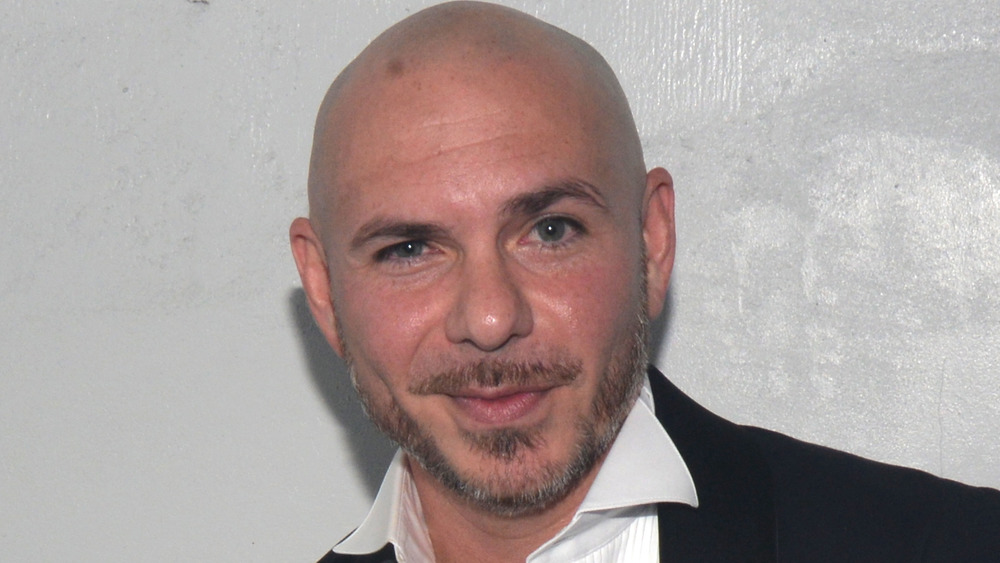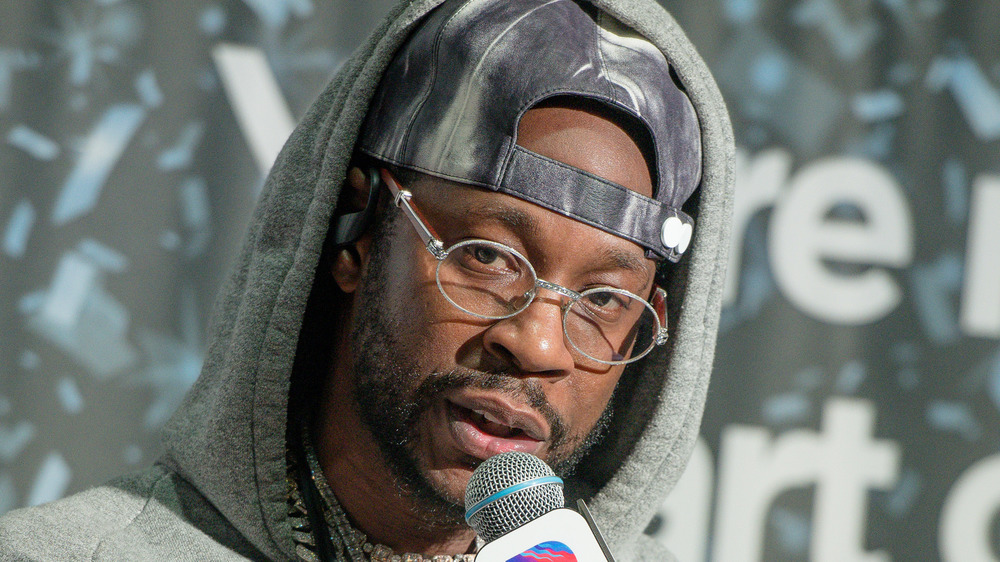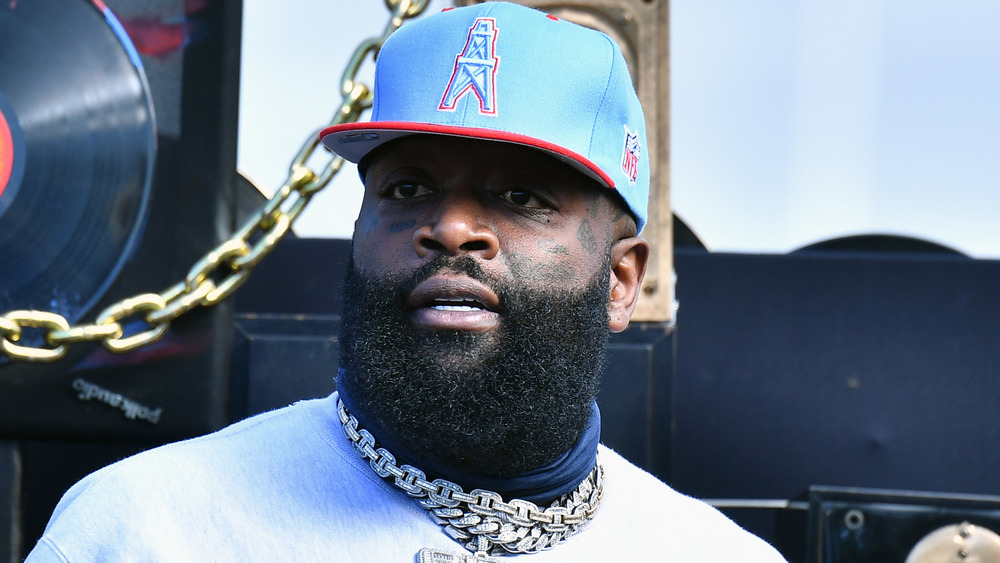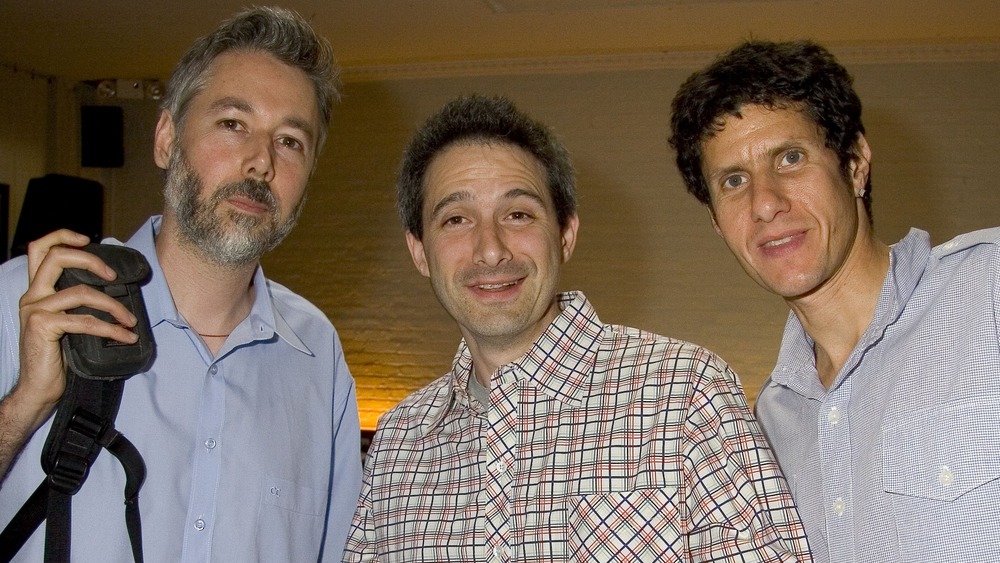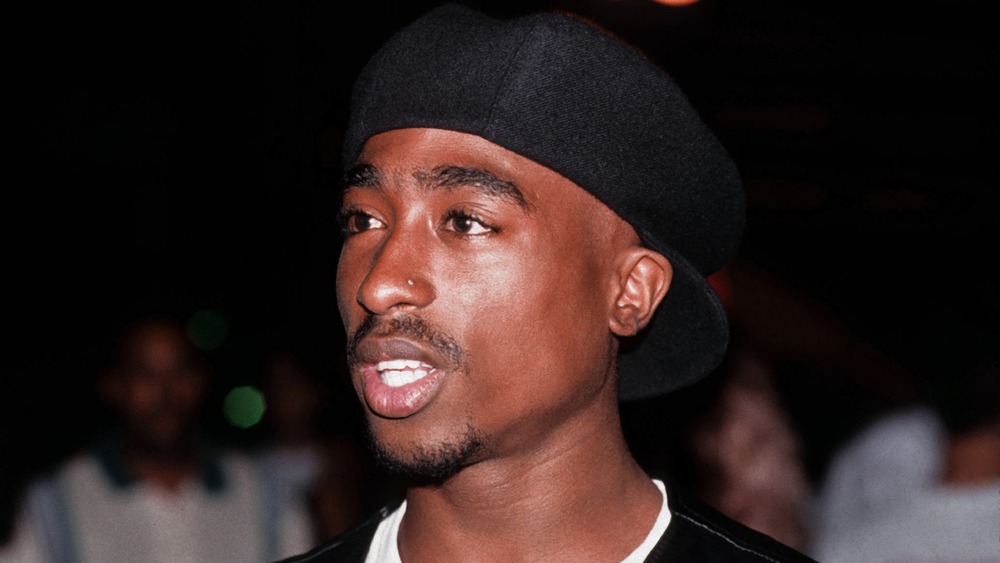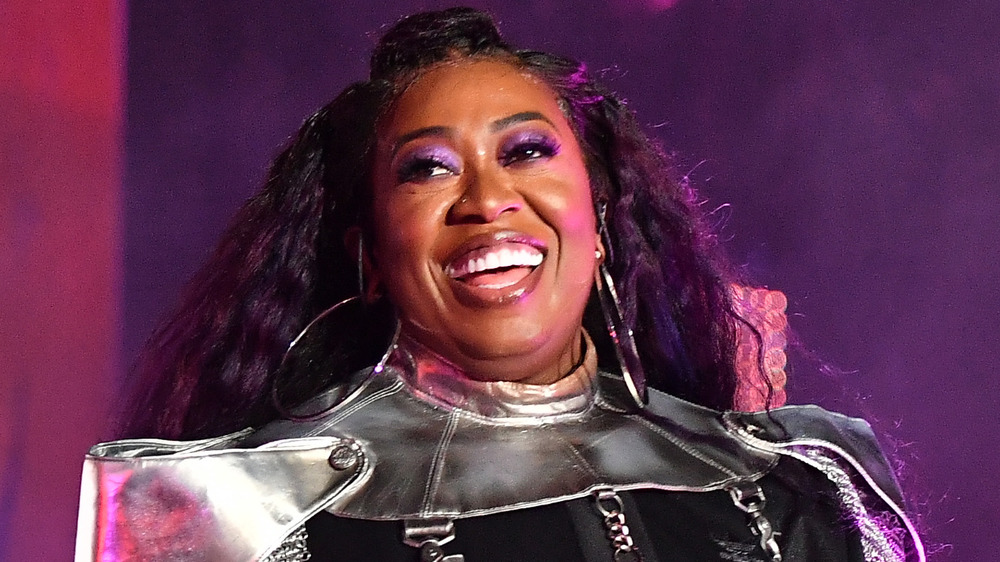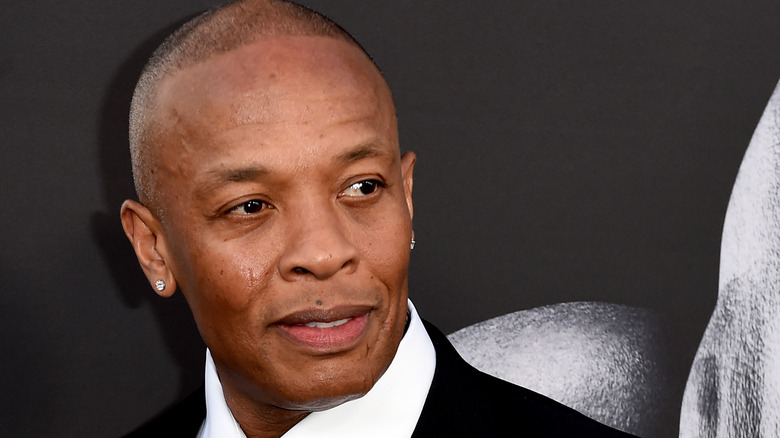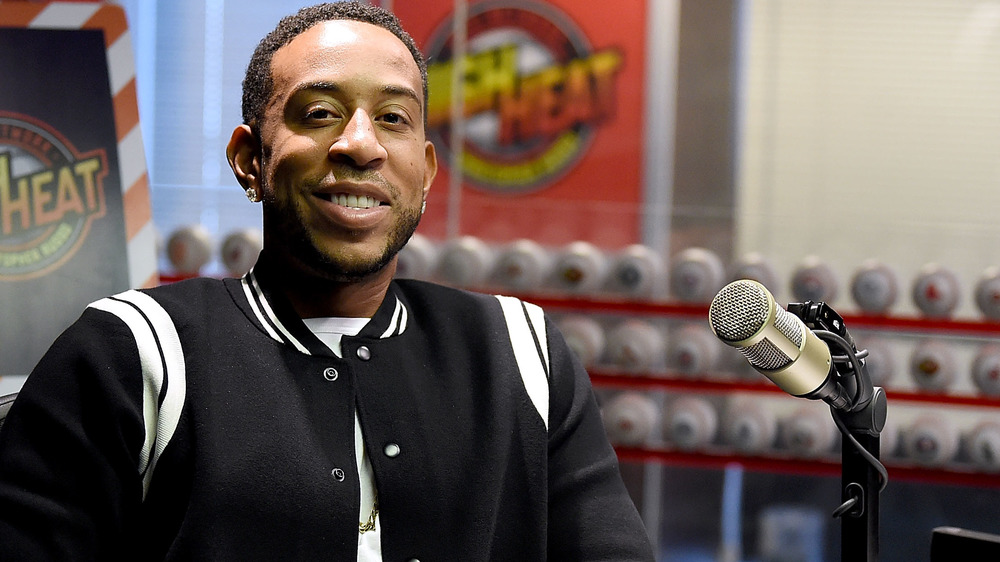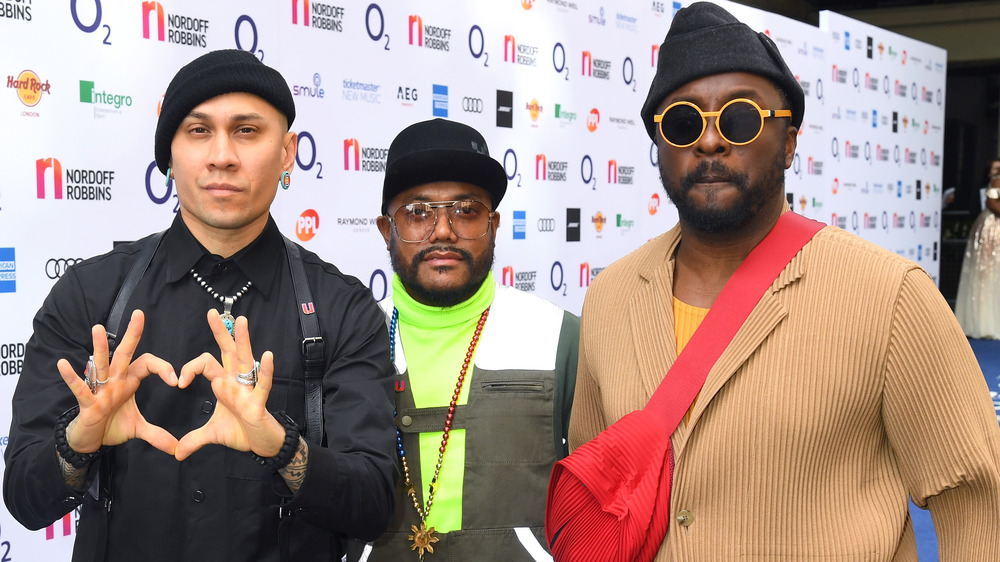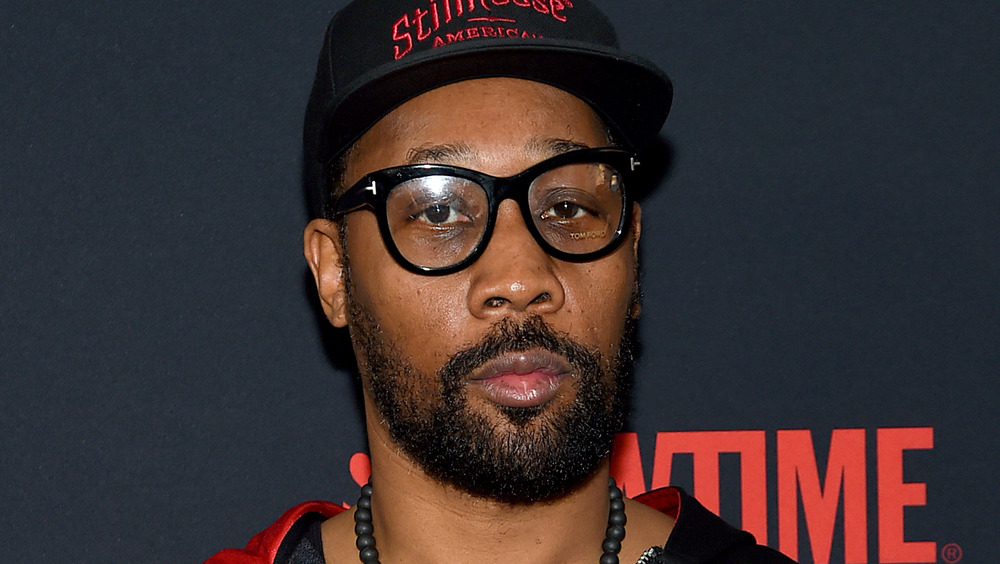Rappers Who Became Successful After Reinventing Themselves
Making it in the music business as an artist has never been easy, and those who've found success have done so in different ways. Some have shot to fame after first getting signed, seeming to go from playing songs in their bedroom to entertaining huge crowds fairly quickly. Then there are artists who haven't had success out of the gate, so they had to reinvent themselves until one day their dreams, or at least some of them, were realized. Sia is a perfect example of one having to reinvent themselves to achieve positive results, seeing that things changed for her when she started focusing on writing for others.
Before that, the singer released her first album OnlySee in 1997 as Sia Furler, but as Discogs noted, it was far from a commercial hit. She dropped the last name and kept releasing albums, which received more attention when she started writing for other artists. Then everything changed for Sia when she released her sixth studio album 1000 Forms of Fear in 2014, which went No.1 on Billboard's 200 charts, a whopping 17 years after her debut. But which rappers have reinvented themselves to amazing results after their first attempts at major success failed? We've gathered some of those hip-hop artists and broke down their stories, which if anything shows that a good combination of persistence and resilience could produce some awesome results.
2 Chainz changed his name and went solo
Sure, we know 2 Chainz as 2 Chainz the A-list rapper now, but that wasn't always the case; he first entered the scene as Tity Boi in the Georgia group Playaz Circle. The group, which also included Chainz's childhood friend Dolla Boy, released their first LP United We Stand, United We Fall independently, which led to a deal with Ludacris' record label Disturbing tha Peace. Playaz Circle then released their first album on the label, Supply & Demand in 2007 and received national exposure with their Lil Wayne-assisted song "Duffle Bag Boy."
Due to the rise in Playaz Circle's popularity, it was easy to assume their next album would slingshot them into the stratosphere. But when their 2009 LP Flight 360: The Takeoff didn't, well, takeoff, Chainz made a life-changing decision. "I woke up one day and I told Luda and them, 'I don't want to be DTP no more," Chainz told Everyday Struggle in 2017. "Then I had to find me a lawyer, and then I ended up getting out [of the contract]. I had to pay him $100k per album ... I've made $100K so many times ... It was a pretty good deal to get out of." After being independent again, the rapper dropped Tity Boi (as he told Vibe, 2 Chainz is more "kid friendly"), released a series of well-received mixtapes, scored a deal with Def Jam Recordings and massive success followed.
Rick Ross got a new moniker and spruced up his image
Sometimes artists do a complete overhaul when reinventing themselves, but some just tweak a few things and bam, fame and success hits them like a boxer with a championship belt on the line. Such is the case with Rick Ross, who used to be known as Tephlon Da Don when he was a protégé of rapper Erick Sermon of the group EPMD. Ross was featured on Sermon's album Def Squad Presents Erick Onasis in 2000 and heard on the song "Ain't Sh* To Discuss." You can hear some of Ross' current flow in his delivery, although it was faster and he rapped with more urgency, which is a bit different from the laid back flow that he's now known for.
The Rick Ross name change came shortly after the Miami rapper appeared on Trina's song "Told Y'all" off her sophomore release Diamond Princess in 2002, as Ambrosia for Heads details. Then by the time 2006 rolled around, Ross was fully immersed in his image as a seasoned crime boss, one who' seen so much in his life that nothing rattles him. This new style was on full display on his debut Port of Miami and it's first single "Hustlin," which made his career take off.
The Beastie Boys pulled a genre switch
Who says that you can't fall in love twice? The Beastie Boys proved you can, first falling head over heels with the punk scene that was raging in Manhattan's Lower East Side in the '80s, then forming a punk band. Then later, it was hip-hop that made the trio swoon, and they took that newfound affection and created a rap group, which eventually shot them to fame. It all started when members Adam "MCA" Yauch, Adam "Ad-Rock" Horovitz, and Michael "Mike D" Diamond met as teenagers in the early '80s while living in New York City, as NPR reports. "So Mike and them, they were hardcore kids but were discovering something new and picked up on hip-hop early," said Bad Brains' Darryl Jenifer during a 2016 interview with Observer. "I think they were trying to be funny with it first because it wasn't really their thing."
Then in 1983, the Beasties released "Cooky Puss," their first official rap song. The cut wound up in a commercial for British Airways without the guys' okay, and as NPR noted, they received $40,000 after suing the company. It's said that Horovitz purchased a drum machine with that money, and the Beasties became a full-on rap group from there. In 1986 they dropped their major label debut Licensed to Ill, which is the first rap album to ever reach No. 1 on the Billboard 200. Tragically, Yauch died in 2012 from cancer at age 47.
Tupac Shakur changed his style and approach
Many have called Tupac Shakur the best rapper ever. But perhaps ironically, Shock G, the Bay Area rapper and leader of the group Digital Underground, called him the best roadie ever in Rolling Stone. A roadie is a person on tour who sets up the equipment while prepping the stage for showtime, and Shock hired Shakur to help with Digital Underground tours. That led to Shakur dancing on stage for the group and in their video for "The Humpty Dance," their most popular cut. But Shakur got his ultimate break when Shock and the group put him on the cut "Same Song" in 1991.
The Digital Underground frontman spoke to Rolling Stone in 2017 about first meeting Shakur and how his music was vastly different from the harder-edged songs that he's known for today. "He still had that you know, Chuck D, KRS-One, LL [Cool J] clarity about his words. It didn't have that Oakland kind of curly-fry drawl that [Too] $hort and E-40 had," Shock explained. "At that point, he was talking about real goofy hip-hop stuff. One of the songs was called "The Case of the Misplaced Mic." After Shakur stopped being a roadie, he scored his own deal with Interscope Records, sported a shaved head regularly, wore tattoos, and embraced a thug persona. There was tons of success for the rapper after that. Tragically, he died from gunshot wounds in a Nevada hospital in 1996.
Missy Elliott left her Sistas
In a lot of music groups, there's often a standout member, one whose talent and star quality can't be denied or suppressed. Missy Elliott seemed to be that person in Fayze, an all-female R&B group who met Jodeci's DeVante Swing backstage at one of Jodeci's concerts, according to Timbaland, who produced Fayze and spoke about Elliott's past with Revolt TV's Drink Champs in 2018. Swing flew the ladies to New Jersey after that meeting, and the wheels were in motion. Eventually, Swing changed the group's name to Sista, and they released a single in 1993 called "Brand New," which would be their only song to see the light of day.
But of course, that would be far from the end for Ms. Elliott, because by the time 1997 rolled around, she was a solo artist who released her debut album, Supa Dupa Fly, which included the much-talked-about single and video "The Rain (Supa Dupa Fly)." After Elliott's debut, several well-received albums followed, all while the rapper, singer, and producer released her own artists like singers Tweet and Nicole Wray. Plus, in June of 2019, the talented Elliott was the first woman in hip-hop to be inducted into the Songwriters Hall of Fame. Basically, if she wanted to, the "Work It" creator could write a how-to book on how to reinvent yourself.
Dr. Dre went the gangsta route
Dr. Dre typically isn't credited for starting gangsta rap — that's given to people like Ice-T and others — but the California producer is surely one of the people who brought the rap subgenre to the mainstream. He first did it as a member of the legendary group N.W.A., then on his record label Aftermath. A few years prior, however, Dre wasn't seen in the typical N.W.A uniform, which included all-black outfits, with maybe a Los Angeles Raiders cap and a gold rope chain. Instead, he rocked sequined outfits in an electronic funk group called World Class Wreckin' Cru. The group, which included future N.W.A member DJ Yella and others, were together from 1983 to 1988, according to the New York Post.
There's one famous photo from those days that shows a young Dre dressed in sparkly white clothing with a stethoscope around his neck, to make his doctor image complete. It was a picture that his former N.W.A. group member Eazy-E would bring up on his 1993 diss-song "Real Muthaph****in G's" and not in a good way. But despite the ribbing Dre received, the group had success and scored a deal with Epic records. But that success would pale in comparison to the huge mark that Dre made with N.W.A. since they're still considered to be one of the most controversial rap groups in history. And let's not forget, Dre's reinvention includes discovering two rappers by the name of Snoop Dogg and Eminem.
Ludacris went from hosting radio to having songs on radio
Ludacris showed that sometimes you have to put yourself on the periphery of your dreams to eventually access them fully. Before he released his LP Back for the First Time in October of 2000, the rapper was an intern, then a radio personality on Atlanta radio station Hot 97.5. As he told the Greensboro News and Record, he called himself Chris Lova Lova in those days because his bosses said Ludacris was not "commercial enough for radio." But although Luda couldn't use the name, he was able to use his lyrical skills to make rap styled radio promotions. "Because he was super dope, I put Chris on many rap promos or whatever as possible. I told Chris that his writing ... was going to make him," said DJ Nabs in 2020 during an interview on Hot 107.9's BHighTV. Nabs is a veteran of Atlanta's music scene and worked with Ludacris back in his radio days.
To this day, there are still videos floating around that show Ludacris as Chris Lova Lova, and that same booming voice that he displays in hits like "What's Your Fantasy" can easily be heard. And going from a radio host to a rapper wasn't the last time that Ludacris reinvented himself to stellar results. He kicked off an acting career, and his resume includes huge films like 2004's Crash and the Fast & Furious movies.
Pitbull did a complete head-to-toe switch
Throughout hip-hop history, there have been some rappers accused of faking their rough and tough image while hiding the fact that they're really clean-cut. Miami rapper Pitbull, on the other hand, did the opposite: He went from having a tough, street image to a clean-cut rapper and saw major success afterward. One thing he did was swap things like baseball caps and oversized t-shirts for formal-wear. Just look at the cover of his first album M.I.A.M.I., released in 2004, then look at covers for Globalization or Dale, released in 2014 and 2015 respectively. In both of those later albums, he's sporting a tuxedo, and his image shift wasn't subtle or gradual at all.
Then Pitbull replaced his traditional rap music with super poppy hip-hop tunes, perfectly suited for say a New Year's Eve TV special or a Miss Universe pageant. There were some who called the famous Floridian a sellout for his change, and he responded in a 2016 Vanity Fair interview by saying, "They're right. I did sell out. I sell out arenas, I sell out stadiums. I sell out a bunch of things all around the world." Pitbull has also become a mogul since reinventing himself, launching a marketing agency that focuses on diversity. Plus, he has a clothing line, his own vodka, and his Honey I'm Home production company.
Black Eyed Peas went pop
Back in the '90s, Black Eyed Peas established a following in Los Angeles' hip-hop scene. As will.i.am recalled to Time Out Dubai, he and apl.de.ap were signed by N.W.A.'s Eazy-E to Ruthless Records in 1992 when they were still called The A.T.B.A.N. Klann. Later, after changing their name to Black Eyed Peas and being dropped by Ruthless, will.i.am, apl.de.ap and Taboo released their debut LP Behind the Front on Interscope Records in 1998. The album consists of '90s East Coast style hip-hop, and the A Tribe Called Quest and De La Soul influences are evident. The LP only peaked at No. 37 on Billboard's Top R&B/Hip-Hop Albums chart when it dropped. Then their follow-up album, 2000's Bridging the Gap, fell three slots down, topping out at No. 40.
But the group would later do two things that would shoot their careers into the cosmos: They changed their music to a far more commercial sound and added singer Fergie to the fold. The new lineup and sound would be fully displayed on 2003' Elephunk, which would be a global hit. The album's first single "Where Is the Love?" for example, spent 25 weeks on Billboard's Hot 100, peaking at No. 8. "Our first record we were making music for us," Will explained on DJDubTV in 2018. "And then we got a whiff of the world and a sense of the world when we toured ... and that sent us off on a course to make music for the planet."
RZA started a legendary rap group
Oftentimes, a group member will find success after going solo. But for RZA, his career exploded when he formed a group, the Wu-Tang Clan. RZA first had a deal with Tommy Boy Records in the late '80s under the name Prince Rakeem, releasing an EP in 1991 that includes the single "Ooh, I Love You, Rakeem." The video portrays RZA, born Robert Diggs, as a ladies man, and his sound, at least on that single, was far different from Wu-Tang tunes. "That was more label-directed. I did it but it wasn't like me being me," RZA told The A.V. Club in 2003 about his Tommy Boy single. But within two years after that song was released, the New York rapper and producer formed his various groups of friends to create Wu-Tang Clan, and they released their classic 1993 debut Enter the Wu-Tang (36 Chambers).
On top of that, RZA made a mark in Hollywood by writing songs for Quentin Tarantino's Kill Bill: Volume 1 and Kill Bill: Volume 2, while still helping Wu-Tang Clan maintain its position of being one of the most respected rap groups ever. "They were and are the most authentic band and brand in hip-hop and it all starts with RZA's vision, his songs, and his struggle, manifested in music," said Merck Mercuriadis in a 2020 statement (via Variety) when it was announced that his company Hipgnosis Songs purchased a 50% stake in the publishing, copyrights, and writing of RZA's songs.

